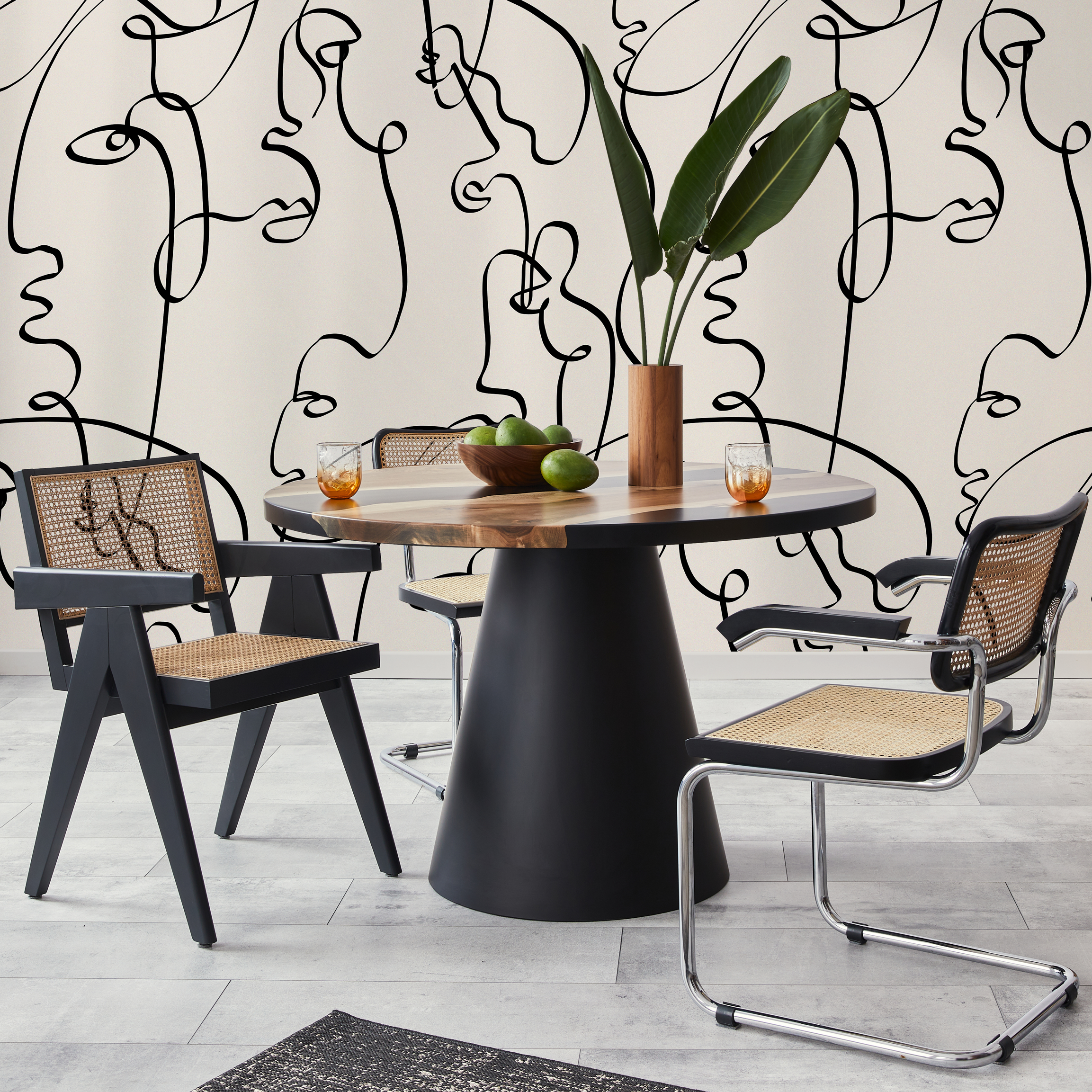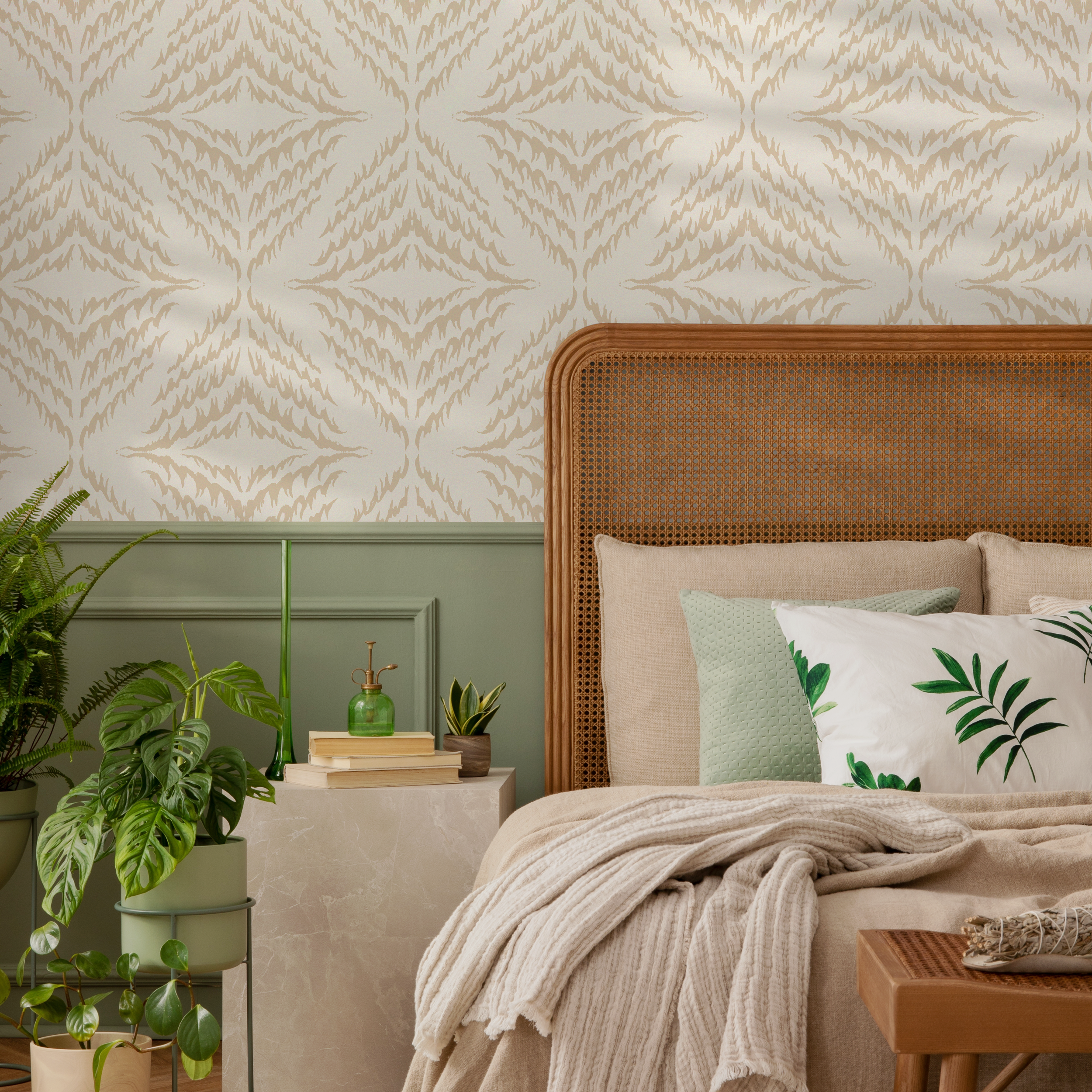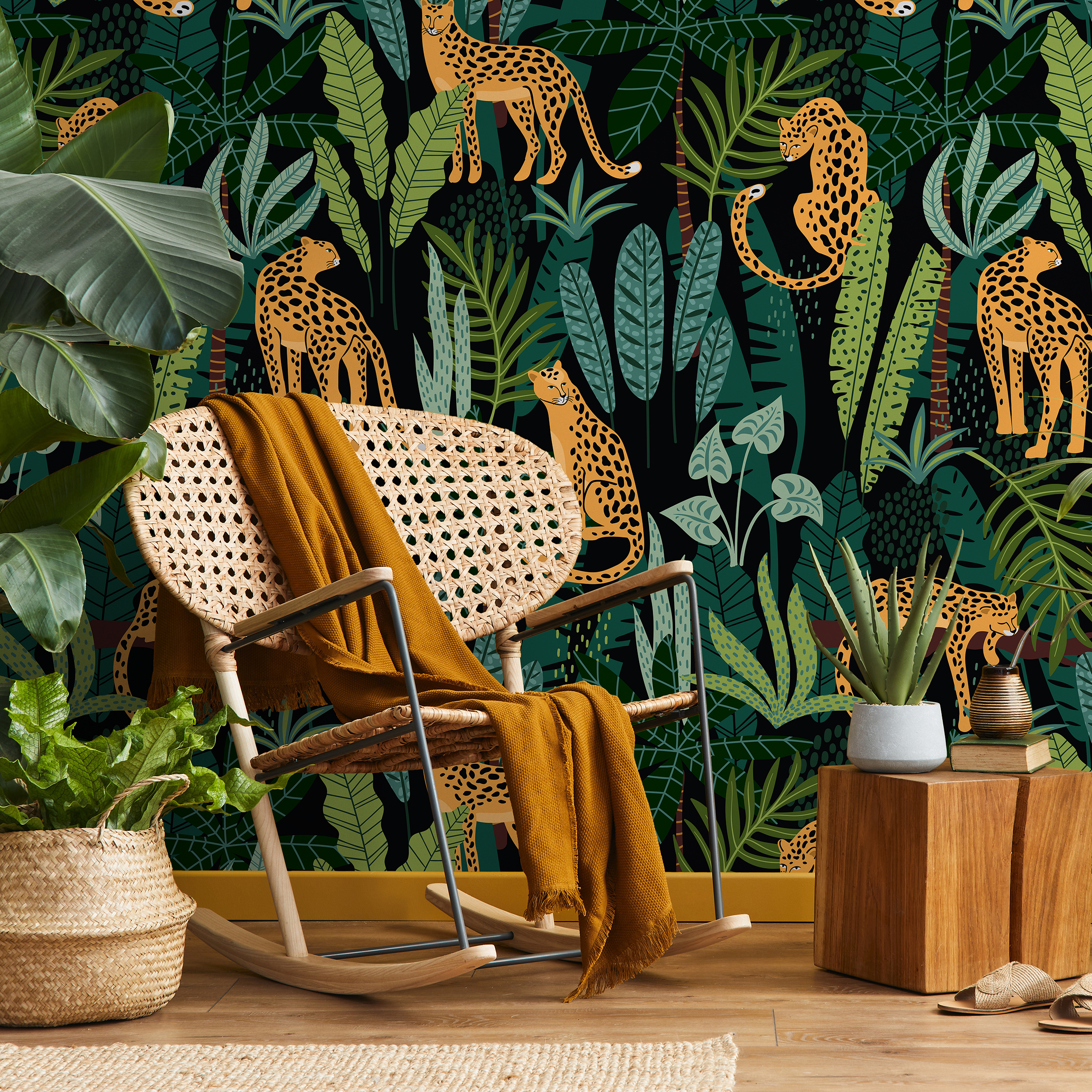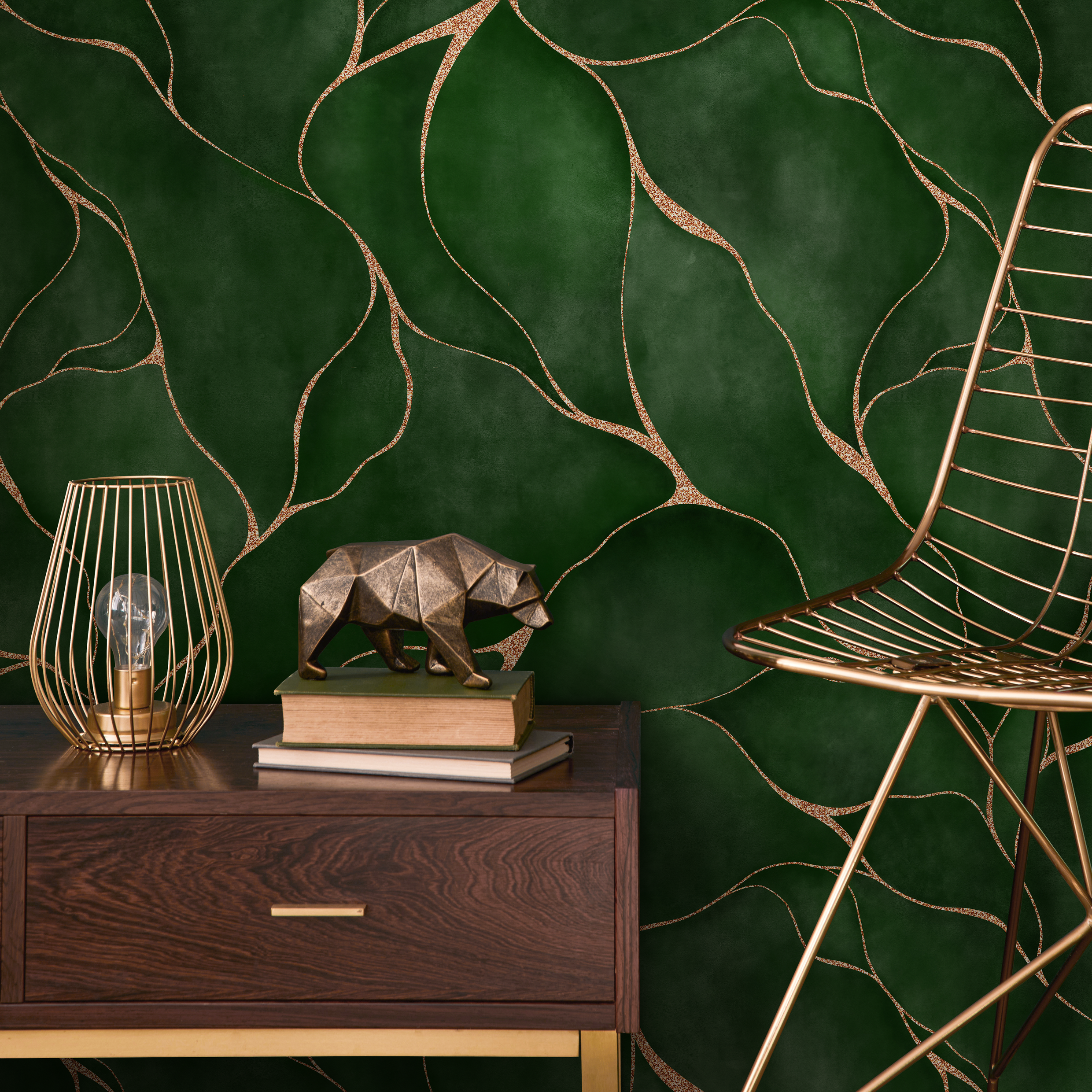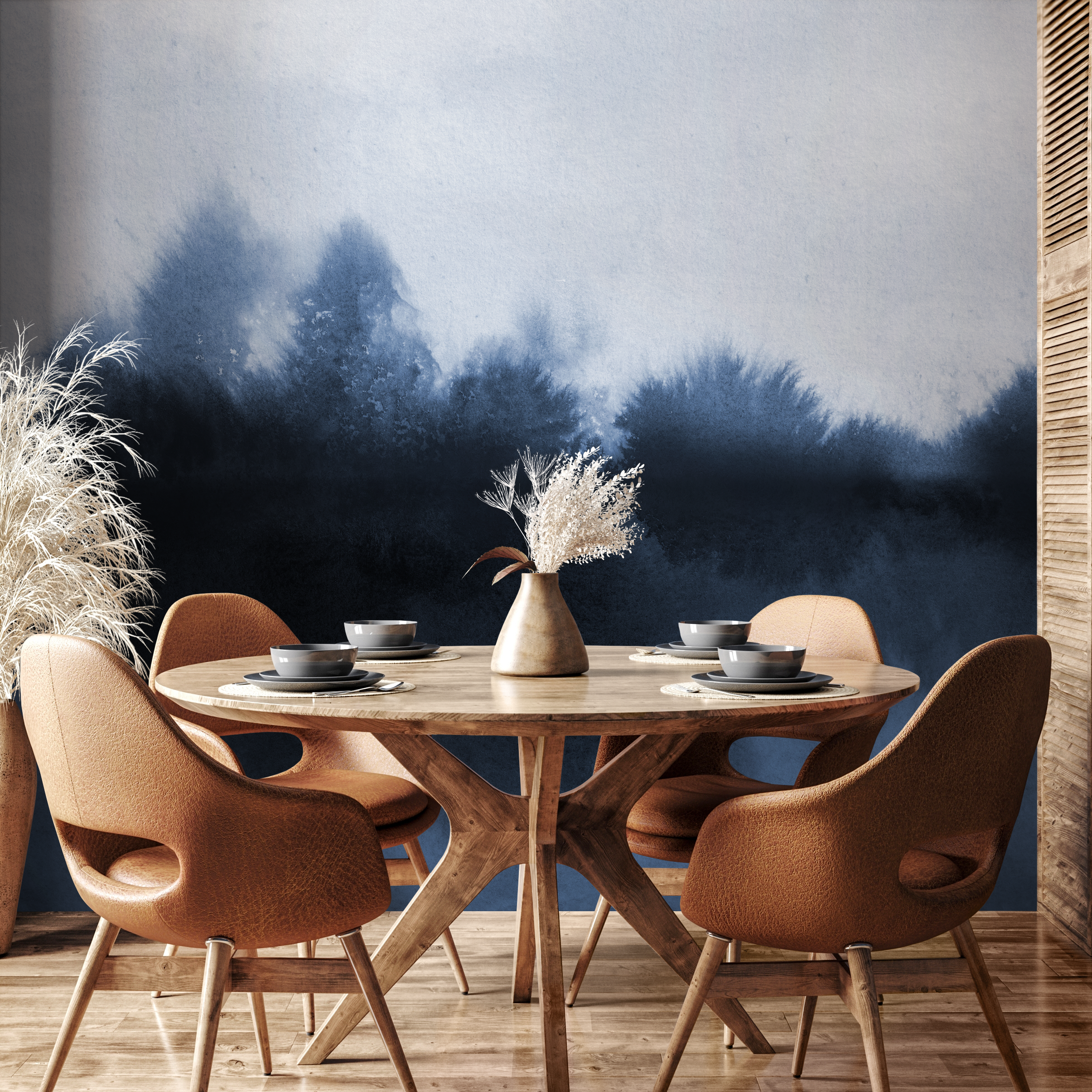Unlocking Wall Transformation: Using Peel and Stick Wallpaper to Conquer Textured Surfaces
In the world of home decor, peel and stick wallpapers have taken center stage, offering a convenient and stylish way to revamp your living spaces. What's not to love? They're easy to apply, require no professional help and they come in an array of stunning patterns and colors. But the question that often pops up in homeowners' minds is, "Can I use peel and stick wallpaper on textured walls?" In this article, we will dive into this subject, providing expert insights and practical tips to help you conquer those textured surfaces with peel and stick wallpaper. Let's get started!
The Challenge: Can Peel and Stick Wallpaper Work on Textured Walls?
Peel and stick wallpaper is a brilliant invention. It's a simple, cost-effective way to refresh your home decor, adding a touch of personality and style to any room. But if your walls are textured, you may find yourself grappling with a significant challenge: Can peel and stick wallpaper work on textured walls? To answer this, let's first look at the manufacturer's perspective, then compare it with the user's experience.
The Manufacturer's Perspective
From the manufacturer's standpoint, applying peel and stick wallpaper on textured walls can be challenging due to the uneven surfaces. Most manufacturers typically recommend against using their products on textured walls. The reasoning behind this caution stems from the fact that uneven surfaces can cause the wallpaper to peel, bubble, or fail to adhere correctly, which might lead to a less than satisfactory result.
But here's the kicker: Not all textured walls are the same. Some walls have a subtle texture, like a faint stucco or plaster finish, while others are heavily textured with a popcorn or knockdown finish. The type and degree of the texture can significantly affect the outcome of your wallpapering project.
The User's Experience
Now, let's take a look at the other side of the coin - the user's experience. Despite the manufacturer's warnings, many homeowners have successfully applied peel and stick wallpapers on textured walls. In fact, some reviews on ONDECOR's peel and stick wallpapers indicate that customers have been able to use the product on slightly textured walls with satisfactory results.
However, it's important to note that success often comes from careful preparation and application. Many users recommend testing a small section first to see how the wallpaper adheres to the textured surface. This step can save you from potentially wasting time and money on wallpaper that won't stick properly.
Moreover, when dealing with heavily textured walls, some users suggest modifying the texture by skimming the wall with a thin layer of joint compound and sanding it smooth. This process helps to create a more even surface for the wallpaper to adhere to, ensuring a better outcome.
In conclusion, while manufacturers generally advise against using peel and stick wallpaper on textured walls, many users have found ways to overcome this challenge with a bit of resourcefulness and elbow grease. The key takeaway here is that the type of wall texture and the quality of the wallpaper play significant roles in determining whether or not peel and stick wallpaper can successfully be used on textured walls. So, are you up for the challenge?
Preparing Your Textured Walls for Peel and Stick Wallpaper
In the quest to transform your living space, the preparation stage is vital. It might be tempting to jump right into sticking your favorite peel and stick wallpaper on your textured walls, but rushing this process can lead to disappointing results. Proper preparation will ensure that your wallpaper adheres securely and smoothly, giving your walls a stunning makeover.
Cleaning and Priming the Surface
Initially, your textured walls need to be as clean and dust-free as possible. Any dirt or dust on the surface can prevent the wallpaper from sticking properly. Clear the area of any furniture and remove any items hanging on the walls, like light switch plates and outlet covers.
Next, give your walls a thorough cleaning. If your walls are relatively smooth with just a bit of texture, a damp rag should suffice to remove any dust. The goal is to maximize the surface area that your peel and stick wallpaper can bond to. Please remember to let your walls dry completely before proceeding. Applying wallpaper on a damp surface can lead to issues with adhesion and potentially damage the wallpaper.
Modifying the Texture: Is it Necessary?
The necessity of modifying the texture of your walls largely depends on the extent of the texture and your personal preferences. For heavily textured walls, consider applying a skim coat using a joint compound. This can help create a smoother surface for the wallpaper to stick to. If your wall only has minor imperfections, you might opt to use spackle to even out the surface.
Keep in mind that both joint compounds and spackling have varying dry times. Always refer to the product packaging for application instructions. Once your chosen product has dried, sand the wall to a smooth finish with sandpaper and wipe off all resulting dust.
Alternatively, you could use a wall liner to create a smooth surface for your wallpaper. Wall liners cover imperfections and provide a great base for the wallpaper to adhere to.
However, modifying your wall texture is not always necessary. In my experience, even without any modifications, I was still able to achieve pretty good results by using a simple hack. But remember, results may vary based on the type of wall texture, the strength of the wallpaper adhesive, room temperature, and other factors. So, always test with a sample before proceeding with the full application.
In the end, preparing your textured walls for peel and stick wallpaper is about ensuring your wallpaper has the best chance to stick and stay. With a clean, primed, and potentially modified surface, you're well on your way to unlocking a refreshing, stylish transformation for your walls.
Choosing the Right Peel and Stick Wallpaper for Textured Walls
Unlocking your wall's transformation is not only about preparation. A significant part of the success lies in choosing the right peel and stick wallpaper for your textured walls. Here we'll delve into what makes a quality wallpaper and the kind of patterns and textures that work well with bumpy surfaces.
The Importance of Quality: Why ONDECOR Stands Out
When it comes to peel and stick wallpaper, you can't compromise on quality. High-quality wallpapers are flexible, durable, and have a strong adhesive that can adhere to slightly textured surfaces. They're also designed to be easy to install and remove without leaving residue or damaging your walls.
ONDECOR's peel and stick wallpapers stand out for these reasons. With a strong focus on quality and design, they offer a wide range of wallpapers that can breathe life into any room. What's more, they're committed to customization, allowing you to adapt the wallpaper to suit your specific spatial, color, and pattern scale needs. This means you can achieve a seamless look, even on textured walls.
Pattern and Texture: What Works Best for Bumpy Surfaces?
When dealing with textured walls, the choice of pattern and texture in your wallpaper can be crucial. A flat, smooth, solid-colored wallpaper might not be the best choice, as it can accentuate the imperfections in the wall. The roughness of the wall may show through, undermining the visual appeal you're aiming for.
Instead, opt for a wallpaper with a three-dimensional texture or pattern. These patterns can help mask the texture of the wall underneath. Embossed wallpapers, for instance, can provide an added layer of texture that works well on bumpy surfaces. Similarly, intricate and busy patterns can distract the eye, making the underlying wall texture less noticeable.
In conclusion, while textured walls pose a challenge for peel and stick wallpaper, it's not an insurmountable one. By choosing a quality product like ONDECOR and selecting a pattern that complements your wall's texture, you can successfully transform your walls into a stunning backdrop for your interior design.
The Application Process: Tips and Tricks for Success
With the right wallpaper in hand and your textured walls prepped, it's time to dive into the application process. Don't be intimidated - though it may seem tricky at first, a few expert tips can make all the difference in achieving a professional-looking result.
Starting Right: Corner to Corner Application
The key to a smooth application is to start at one corner of your wall and work your way across. The highest point of the wallpaper should be in this corner. Begin by peeling a few inches of the liner away from the top of the wallpaper and align it with the ceiling and the adjacent wall edge. Press this small section down first with your hands, then use a scraper tool to smooth out any bubbles.
As you move down the wall, peel the liner back a few inches at a time and use the scraper tool in a downward motion to smooth the wallpaper. If you're dealing with a large, bulky strip of wallpaper, it may be helpful to have a second person hold the bottom portion while you secure the top edge.
Dealing with Obstacles: Light Switches, Outlets, and Door Frames
When you come across obstacles like light switches or outlets, turn off the electricity for safety and remove any cover plates. Apply the wallpaper until you reach the obstacle, then let it rest over it. Using a craft knife, cut around the obstacle and use the cover plate as a guide. Once the area is exposed, press the wallpaper around it and smooth out any bubbles with the scraper.
For door frames, apply the wallpaper until you reach the top of the frame, then trim the edge meeting the frame until you reach the corner. Continue applying the wallpaper down the side of the frame, then trim off the excess.
Troubleshooting: What to Do When the Wallpaper Doesn't Stick
Despite your best efforts, you may find that your peel and stick wallpaper isn't adhering to your textured walls. This is a common issue, especially in hot climates where the adhesive may not be as effective.
One solution is to secure the top edge of the wallpaper with several small flat head nails. This not only ensures that the wallpaper stays up, but it also leaves a minimal footprint on your walls. However, be sure to proceed with caution and remember that this solution may not be suitable for all wallpapers or wall textures.
The application process may take some patience and finesse, but with these tips and tricks, you're well on your way to transforming your textured walls with beautiful peel and stick wallpaper. The end result? A stunning interior space that reflects your unique style and taste.
Maintaining Your Peel and Stick Wallpaper on Textured Walls
Longevity: How Long Can You Expect it to Last?
The longevity of your peel and stick wallpaper depends on a few factors, including the quality of the wallpaper, the conditions of the room, and how well you prepared the wall before installation. With high-quality peel and stick wallpaper, like those offered by ONDECOR, you can expect your wallpaper to last for several years, if not longer.
However, keep in mind that the longevity of your wallpaper might be slightly compromised on textured surfaces. This is because the adhesive might not stick as well to a bumpy surface compared to a smooth one. But rest assured, with the right preparation and application, your wallpaper can still hold up beautifully for years.
Here's a tip: if you notice any corners or edges starting to peel, simply smooth them back down. If the peel persists, consider reapplying a small amount of adhesive to that area.
Dealing with High-Moisture Areas and Humid Climates
High-moisture areas and humid climates present another challenge for peel and stick wallpaper, especially on textured walls. Moisture can seep into the texture bumps and crevices, which might affect the adhesive's performance and potentially lead to peeling.
But don't let that stop you from enhancing your living spaces! Even in these conditions, peel and stick wallpapers can still be a viable option. Consider using a dehumidifier or ventilating the room well to control the moisture level.
Also, remember to use high-quality, waterproof wallpapers. ONDECOR offers a range of waterproof peel and stick wallpapers that are designed to withstand high-moisture environments. These wallpapers are not just stylish, but are also engineered to resist moisture and humidity, ensuring they stay put and look great for a long time.
In conclusion, maintaining your peel and stick wallpaper on textured walls is indeed a manageable task. By choosing high-quality materials, preparing your walls correctly, and taking some precautions in high-moisture areas, you can enjoy the charm and convenience of peel and stick wallpaper for years to come.
Conclusion: Transforming Your Textured Walls with Peel and Stick Wallpaper
Conquering the challenge of textured walls with peel and stick wallpaper is not only possible, but it also opens the door to a world of interior design possibilities. With the right preparation, quality materials, and a bit of patience, you can transform any space in your home, adding character, style, and personality.
While manufacturers often warn against applying peel and stick wallpaper on textured surfaces, real-world experiences show that it can be done. The key here is not to rush the process and to ensure your walls are as clean and dust-free as possible before installation. And remember, testing a sample on your wall before placing a full order can save you from potential disappointment.
When it comes to choosing the right wallpaper, quality matters. ONDECOR offers a wide range of high-quality peel and stick wallpapers that are designed to adhere properly and last long. Their range of patterns and textures provide countless options for every design preference and style, be it modern, traditional, or something in between.
The application process may require some effort, but with the right approach and helpful tips, you can successfully install your peel and stick wallpaper. Starting from the right corner, dealing with obstacles like light switches and outlets, and troubleshooting when the wallpaper doesn't stick are all part of the journey to transforming your textured walls.
Maintenance is a crucial part of ensuring the longevity of your wallpaper. With proper care and precautions, especially in high-moisture areas, your peel and stick wallpaper can last for years, providing a stylish and cost-effective solution to your home decor needs.
In conclusion, textured walls are not a barrier but rather an opportunity for a creative and unique transformation. By using peel and stick wallpaper, you can breathe new life into your space, showcase your personal style, and conquer textured surfaces with ease and confidence. So why not embark on this exciting home improvement adventure? With ONDECOR's high-quality peel and stick wallpapers, your dream home is just a peel, stick, and smooth away.
Share










